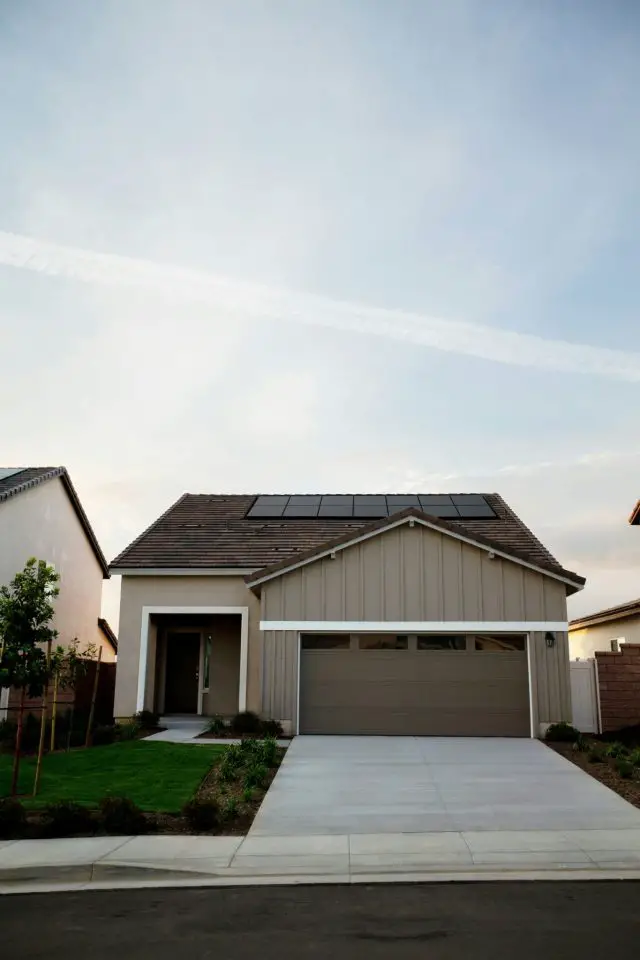
Building a robust garage isn’t just about putting up four walls and a roof. It requires thoughtful planning and quality choices in every aspect. You’ll need to consider the materials you use, like steel for framing and treated lumber to prevent rot. But that’s just the beginning.
How you plan your layout, ensuring proper ventilation, and investing in the right insulation are equally critical. Let’s not forget the importance of durable flooring and securing your garage with reinforced doors and smart locks. If you’re wondering how to combine all these elements effectively, keep on discovering the key steps.
Choose Quality Materials
To ensure your garage stands the test of time, you should prioritize selecting high-quality materials that are both durable and resilient. Start by considering steel for the frame and roofing, thanks to its strength and longevity. Opt for treated lumber to prevent rot and insect damage. For the flooring, polished concrete offers excellent durability and ease of maintenance.
Insulation is critical for comfort in summer and winter, so choose high-R-value materials to maintain temperature control. Don’t forget weather-resistant doors and windows to withstand various elements.
To streamline your search for these materials, check out garage wholesalers for a huge range of garages. By investing in top-tier materials, you’re not only enhancing your garage’s durability but also ensuring it complements your innovative lifestyle.
Plan Your Layout
One of the first steps in planning your garage layout is to assess your needs and determine how you’ll use the space. Will it be a workshop, storage area, or a place to park your vehicles? Sketch a floor plan to visualize spatial arrangements. Think about workflow efficiency; place frequently used items within easy reach. Allocate zones for specific tasks—tool storage, workbenches, and vehicle parking.
Consider vertical space for shelving and overhead storage to maximize capacity. Integrate smart storage solutions like modular cabinets and pegboards. Don’t forget electrical outlets and lighting placement for optimal functionality.
Ensure Proper Ventilation
Proper ventilation in your garage is crucial for maintaining air quality and preventing hazardous fumes or moisture from accumulating. One option is installing high-quality vents or exhaust fans to ensure a continuous airflow. Position them strategically—place intake vents low on the walls and exhaust vents high to facilitate efficient air exchange. Make sure the system handles the specific requirements of your garage size and usage.
For added innovation, consider integrating a smart ventilation system that monitors air quality and adjusts airflow automatically. Utilizing energy-efficient models can also save on utility costs. Don’t forget to regularly inspect and clean the vents to maintain optimal performance.
Invest in Insulation
Installing high-quality insulation in your garage is essential for regulating temperature and enhancing energy efficiency. Start by choosing the right insulation material, like spray foam, fiberglass, or rigid foam boards, each offering unique benefits. Spray foam excels in sealing gaps, while fiberglass is cost-effective, and rigid foam provides a high R-value per inch.
Focus on insulating walls, ceiling, and garage doors. A well-insulated garage reduces heat loss in winter and keeps it cooler in summer, lowering energy bills. Don’t overlook weatherstripping around doors and windows to prevent drafts. For an innovative approach, consider smart insulation systems that adapt to changing conditions, ensuring optimal performance. Investing in insulation doesn’t just enhance comfort; it’s a step toward a sustainable, energy-efficient garage.
Focus on Flooring
When selecting the right flooring for your garage, consider durability, ease of maintenance, and resistance to chemicals and stains. Epoxy coatings stand out for their robustness and sleek finish, providing a seamless surface that’s both attractive and practical. They’re highly resistant to spills and easy to clean.
If you prefer something different, interlocking tiles offer a modular approach, making installation a breeze and allowing for easy replacement of damaged sections. Polyurethane finishes are another innovative option, offering flexibility and resilience against impact.
Whichever option you choose, ensure it aligns with your specific needs and enhances the overall functionality of your garage. Investing in high-quality flooring sets the foundation for a space that’s both practical and aesthetically pleasing.
Secure Your Garage
To ensure your garage remains a safe and secure space, start by evaluating the integrity of your doors and windows. Reinforce them with high-quality locks and consider installing smart locks for added security.
If you plan to store valuable items in your garage, consider a security system with motion detectors and cameras. Opt for innovative solutions like smart cameras that send real-time alerts to your phone. Don’t overlook the importance of lighting; motion-activated lights can deter potential intruders. Seal any gaps or cracks in the garage structure to prevent unauthorized access.
If your garage is attached to your home, ensure the connecting door is as secure as your front door. By integrating these advanced security measures, you’ll protect not only your garage but also your entire home.
Conclusion
So, you thought building a garage would be a simple weekend project? Think again. By choosing quality materials, planning your layout meticulously, ensuring proper ventilation, investing in insulation, focusing on flooring, and securing your garage, you’re not just throwing up four walls and a roof.
You’re crafting a fortress of functionality and security. Ironically, the devil’s in the details, but those details make all the difference. Get it right, and your garage will thank you.











